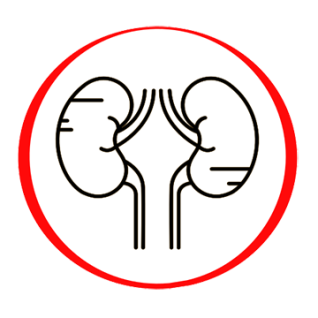Blood take service 5.00€

Serum protein fraction electrophoresis method
15.00€
20.00€
The validity period of online orders: 3 months from the purchase date.
When performing serum protein fractions, six are distinguished: albumins, α1-globulins, α2-globulins, β1-globulins, β2-globulins, and γ-globulins. When determining the proteinogram, various peaks may be detected in atypical places. The most common is the so-called M-gradient. It usually indicates that a pathological paraprotein is being synthesized in the body.
Albumin increase is characteristic of dehydration (along with increased hematocrit). Albumin decrease is characteristic of nephrotic syndrome, liver pathologies, intestinal diseases, malabsorption, cachexia, congenital albumin genetic defects (analbuminemia, bisalbuminemia).
Globulin increase and decrease can occur due to a variety of reasons.
α1-globulins increase due to inflammations, tumors; necrotic processes; parasitic diseases. They decrease due to α1-antitrypsin deficiency in the body (a congenital genetic defect that leads to the development of emphysema and cirrhosis), α1-antitrypsin concentration in serum can be measured directly; protein loss, neonatal respiratory insufficiency.
α2-globulins increase due to inflammations (the fraction contains proteins–inflammation mediators); tumors, especially kidney cancer, lung cancer; nephrotic syndrome; rheumatism; pregnancy; diabetes, necrotic processes; parasitic diseases. They decrease due to hemolysis (because haptoglobin concentration significantly decreases during hemolysis); liver pathologies; acute hepatotoxic effects; blood transfusions; surgical traumas.
β-globulins increase due to iron deficiency anemia; estrogen therapy; hyperlipoproteinemia; pregnancy. They decrease due to inflammation; chronic infections; malignant tumors; chronic liver diseases; nephrotic syndrome; enteropathy and protein loss.
γ-globulins increase due to multiple myeloma and other paraproteinemias. In unclear symptoms, it is found that malignant diseases usually show a gradual increase in the γ-globulin fraction, the finding of an M-gradient, and other signs. It is important to evaluate how the γ-globulin fraction changes over time (gradual increase or stable concentration); benign monoclonal gammopathies; amyloidosis; malignant lymphomas; acute inflammatory processes; liver cirrhosis, chronic hepatitis; bronchial asthma; tuberculosis; sarcoidosis. They decrease due to nephrotic syndrome; B-lymphocyte proliferative diseases, lympholeukemia, lymphosarcoma, lymphogranulomatosis; multiple myeloma (Bence-Jones protein in urine, light chains); treatment with immunosuppressants, steroids, cytostatics; respiratory lung diseases; eczema; widespread purulent infections; congenital hypogammaglobulinemias; congenital hypogammaglobulinemias; terminal stage of AIDS; radiation disease.
Recommendations:
- It is recommended to be performed prophylactically once a year, and for disease diagnosis and treatment control, it is performed periodically according to the doctor's instructions.
- The test results are influenced by medications, diet (consumption of dietary supplements).
- It is required to come for the test fasting for 12 hours.

Reference: 15003
15.00€
20.00€






